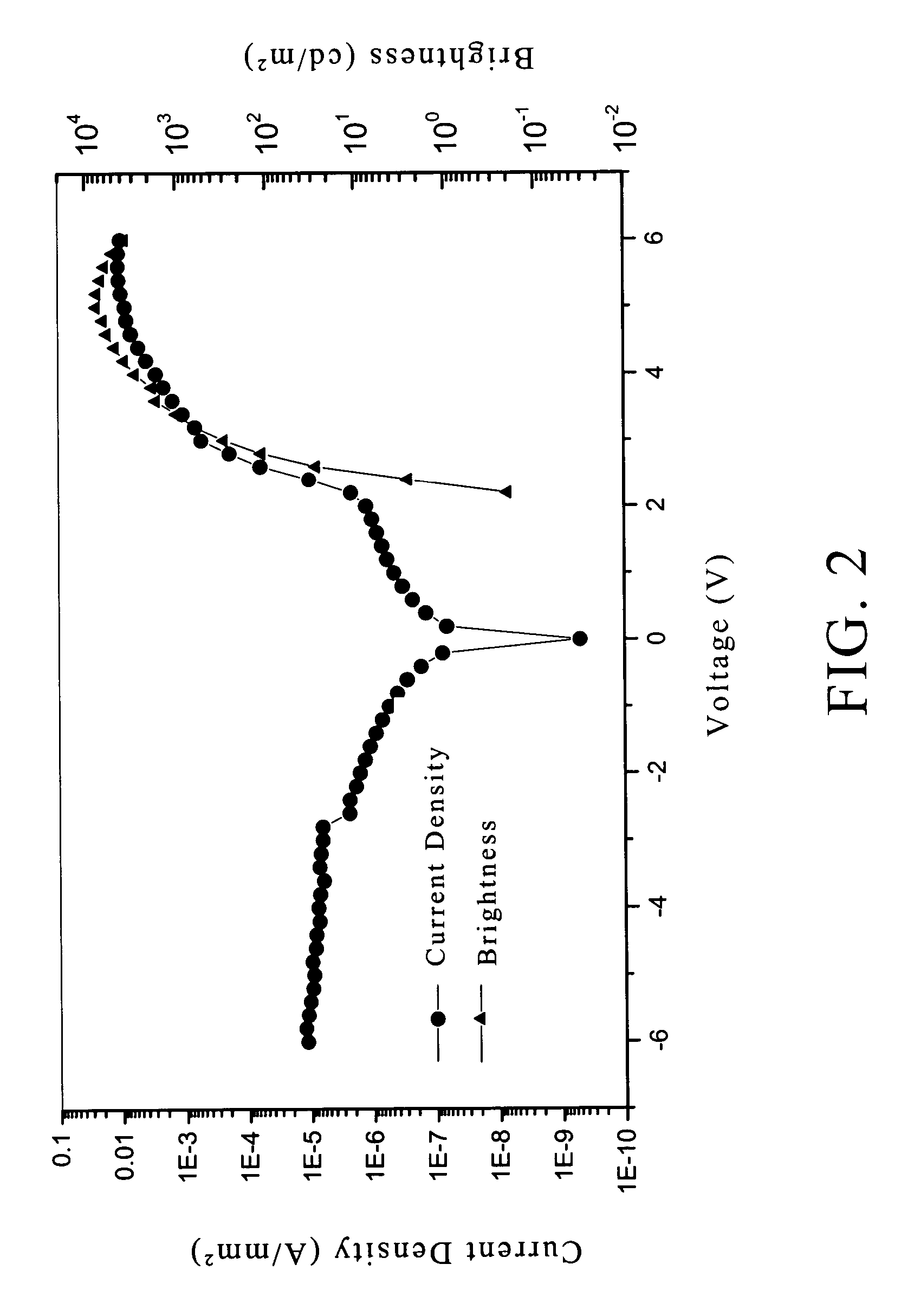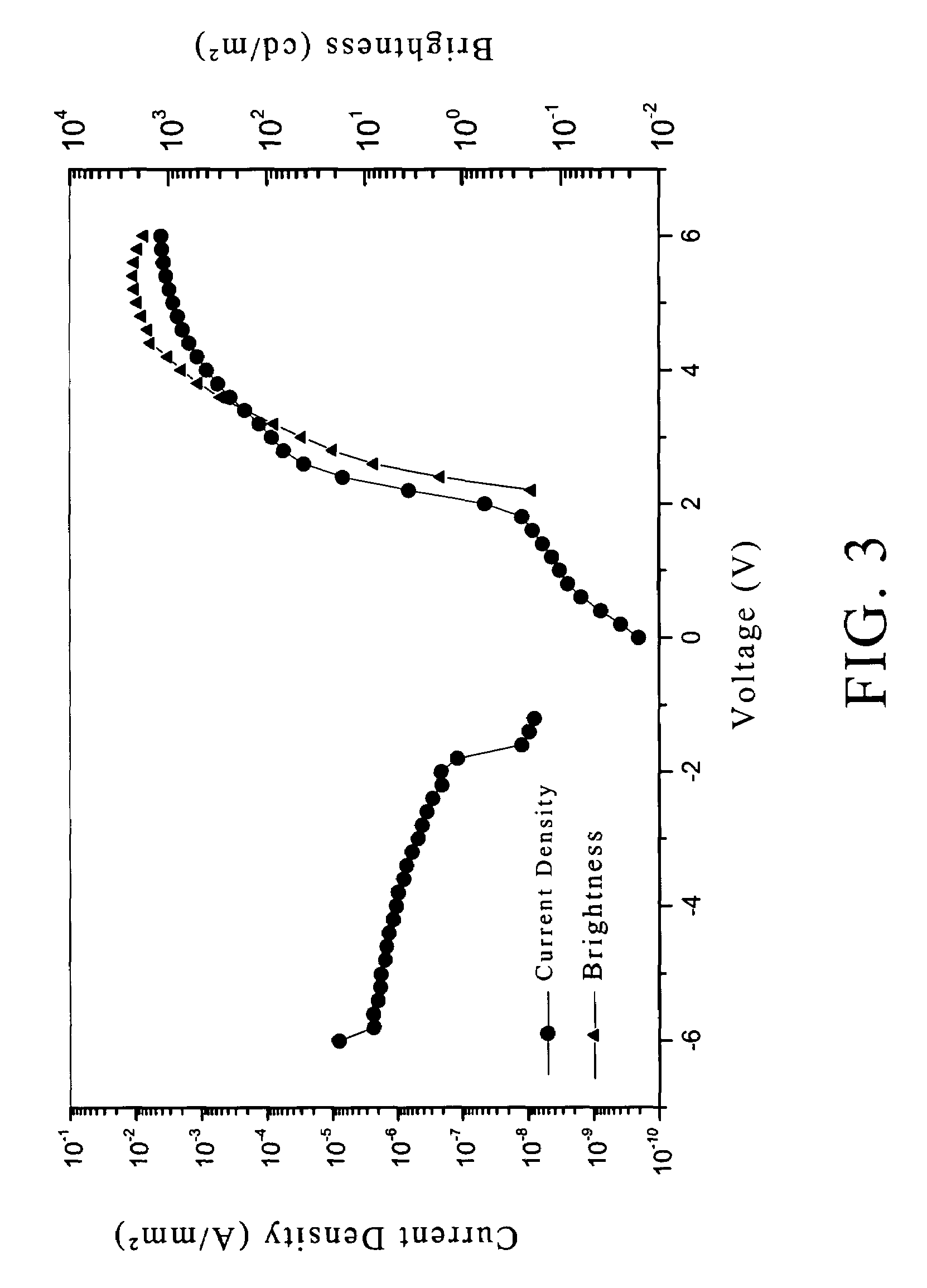Method of reducing photoelectric device leakage current in conjugated polymer and conjugated polymer composition
- Summary
- Abstract
- Description
- Claims
- Application Information
AI Technical Summary
Benefits of technology
Problems solved by technology
Method used
Image
Examples
preparation 1
[0026]Conjugated polymer poly(2,3-dibutoxy-1,4-phenylene vinylene) (herein referred to as DB-PPV) was dissolved in dehydrated anisole in a concentration of 2.5 mg / cc under N2. The resulting solution was divided into four parts for the use in Comparative Example 1 and Examples 1 to 3. The molecular weight of the DB-PPV was about 860,000, and the distribution of molecular weight was 4.2. The metal ions and the amounts thereof contained in the DB-PPV are shown in Table 1.
[0027]
TABLE 1Metal ions and amounts thereof in the DB-PPVIonAmount of ion (ppm)Na23.6Mg13.1Al43.5K1238.0Ca128.8Cr2.8Mn1.2Fe65.9Co1.4Ni6.4Cu11.2Ba1.1Pb4.2Total1541content
example 1
[0029]18-crown-6 as a chelating agent was added to the DB-PPV obtained from Preparation 1 in an amount of 5 wt % based on the weight of the DB-PPV polymer. PEDOT was spin-coated on a clean ITO glass sheet to form a layer of hole transferring material with a thickness of 60 nm. The DB-PPV solution containing the chelating agent was spin-coated on the PEDOT layer at 2000 rpm to form an electroluminescent layer with a thickness of 50 nm. The resultant was placed in a vacuum chamber and vacuumed to a pressure of 10−6 Torr, and then, a calcium layer as a cathode with a thickness of 50 nm was vapor-deposited over the electroluminescent layer. An aluminum layer as a protective layer was vapor-deposited over the cathode, and a device was accomplished. The photoelectric properties of the device were tested to obtain FIG. 2 showing the relations among current, voltage, and brightness.
example 2
[0030]Example 2 was performed using the method same as Example 1, provided that 8-hydroxyquinoline was used as the chelating is agent instead of 18-crown-6. The photoelectric properties of the resulting device were tested to obtain FIG. 3.
PUM
| Property | Measurement | Unit |
|---|---|---|
| Fraction | aaaaa | aaaaa |
| Fraction | aaaaa | aaaaa |
| Fraction | aaaaa | aaaaa |
Abstract
Description
Claims
Application Information
 Login to View More
Login to View More - R&D
- Intellectual Property
- Life Sciences
- Materials
- Tech Scout
- Unparalleled Data Quality
- Higher Quality Content
- 60% Fewer Hallucinations
Browse by: Latest US Patents, China's latest patents, Technical Efficacy Thesaurus, Application Domain, Technology Topic, Popular Technical Reports.
© 2025 PatSnap. All rights reserved.Legal|Privacy policy|Modern Slavery Act Transparency Statement|Sitemap|About US| Contact US: help@patsnap.com



